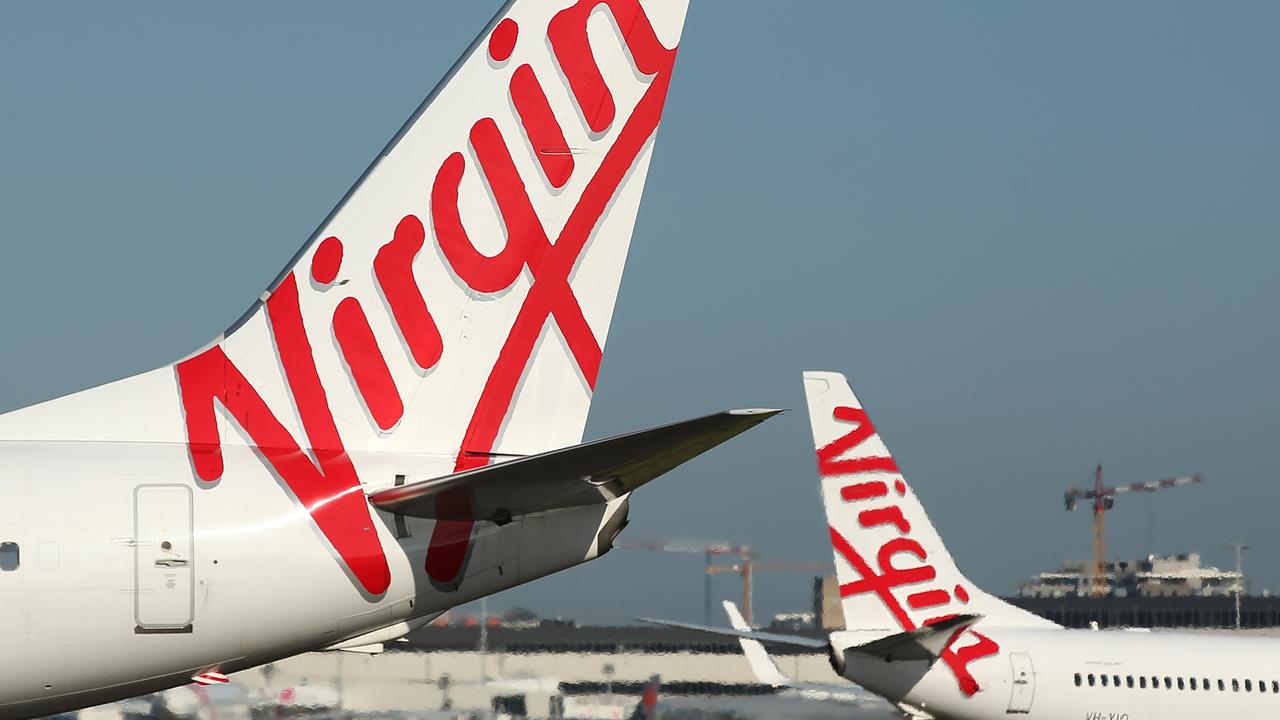Singapore Airlines flight: What causes air turbulence and how common is it?
The Singapore Airlines turbulence horror has shocked travellers around the world after the plane plunged 6000ft, killing one man. Experts reveal their theories on what happened.
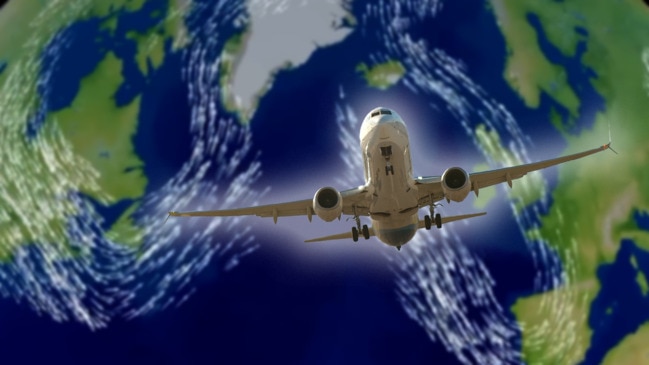
Travel
Don't miss out on the headlines from Travel. Followed categories will be added to My News.
It’s the stuff of every nervous flyer’s worst fears: a bumpy ride, and a sudden, massive drop in altitude. Unsecured items become airborne, and passengers who are not securely seatbelted sustain injuries, many smashing their heads on overhead cabin bins. A quiet international flight – the sort that millions of people take every day – becomes a scene of people crying, shouting and screaming.
This is what happened on Singapore Airlines Flight 321. One British passenger died and more than 30 people have been taken to hospital, including eight Australians. Seven passengers are being treated for critical injuries.
What happened on Singapore Airlines Flight 321?
The Singapore Airlines Boeing 777-300ER from London Heathrow to Singapore hit turbulence as it approached the border between Myanmar and Thailand at 2.19pm local time (5.19pm AET). There had been heavy thunderstorms in the area. According to passenger reports breakfast was being served at the time.
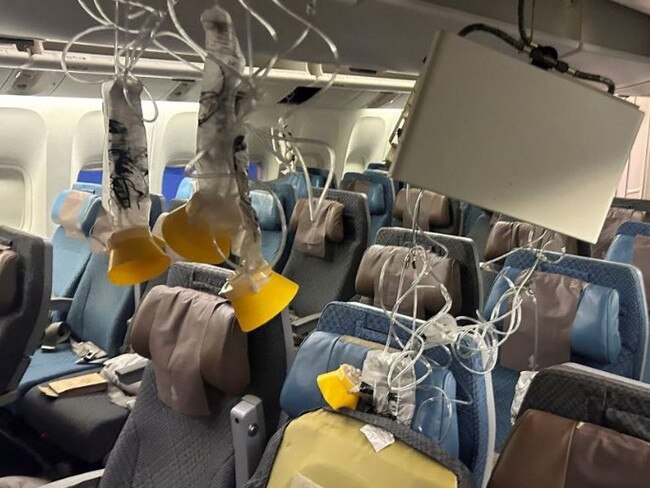
Over the course of five minutes, the plane descended from 37,000 feet (11,300m) to 31,000 feet (9448m).
According to FlightTracker24, the main plunge lasted about minute.
“While the aircraft may have continued to experience turbulence during that descent, it was a standard descent to a new flight level controlled by the altitude selection in the aircraft’s autopilot,” the report on FlightTracker stated.
The flight requested an emergency landing at Bangkok International Airport.
Turbulence forces rapid descent of London to Singapore flight
How many victims are there and where are they from?
Singapore Airlines provided details on the nationalities of those on the flight.
There were a total of 211 passengers and 18 crew on board; 56 passengers were Australian. British passenger Geoffrey Kitchen, 73, died on board.
More than 30 passengers were taken to hospital, including eight Australians. A total of seven passengers are being treated for critical injuries.
Footage shows aftermath of the turbulence
Victims have told of what happened inside the flight, and video has emerged of the damage.


What investigations are under way?
Singapore Airlines said it was sending a team to Bangkok to provide additional assistance and it “fully co-operating with the relevant authorities in the investigation into this incident”.
Aviation investigators from the United States National Transportation Safety Board (NTSB) and Singapore Transport Ministry are expected to arrive in Bangkok on Thursday.
There was no immediate statement from the Thai civil aviation authority.
What is turbulence and how can planes avoid it?
Turbulence is categorised as either slight, moderate or severe, and there are two main types: clear air turbulence and that associated with thunderstorm activity.
Captain Tony Lucas, a Qantas pilot and current president of the Australian and International Pilots Association, said weather radar technology to detect storm turbulence had improved markedly throughout his 29 year career in the skies.
Pilots will avoid thunderstorm turbulence wherever possible, diverting 40 or more nautical miles if necessary, Capt Lucas said.
Other times a detour is not required.
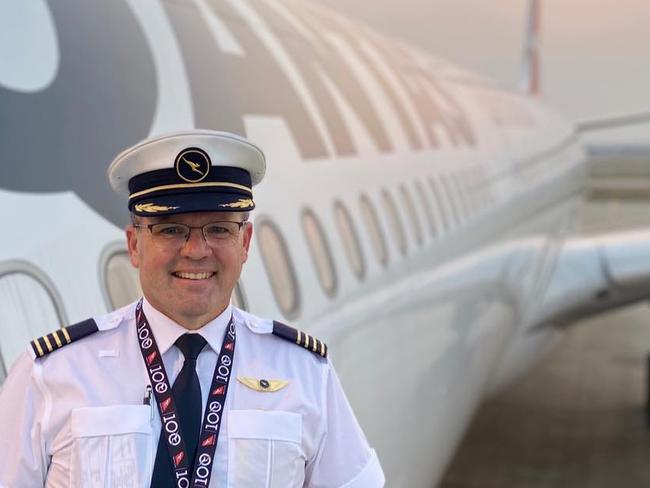
“I’m not saying we’d fly through the heart of a thunderstorm, we’d never do that, but you can pick you way through and avoid the worst of the bumps,” he said.
Clear-air turbulence is more hazardous because it’s “essentially invisible to remote sensing tools” the authors of a 2023 University of Reading paper on the subject stated.
“It’s also challenging to predict because it is created by small-scale eddies that are too localised for most weather models to explicitly calculate,” the paper stated.
“What we call clear-air turbulence is mostly associated with changes in wind speed and direction,” Capt Lucas said.
Passengers sometimes refer to this as an “air pocket” which is not a technical term.
“It’s just the wind changing direction on us and the rate that the wind changes direction is what determines how significant the turbulence will be,” he said.
But it’s very difficult to predict.
“We’ve seen strong winds and no turbulence, and we can have light winds that are quite turbulent,” Capt Lucas said.
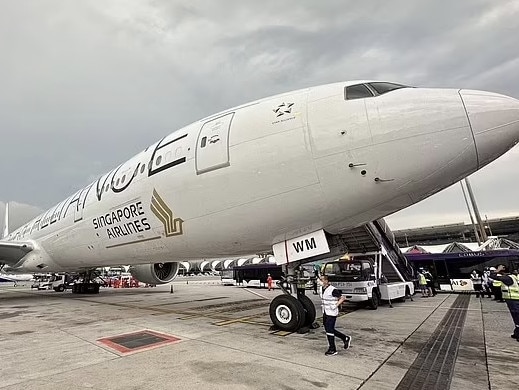
Are some regions more prone to turbulence?
Capt Lucas said the Inter-Tropical Convergence Zone (ITCZ) near the equator was a known hotspot for turbulence.
This zone drifts north or south of the equator depending on the position of the sun, he said.
“Anytime you’re going Southern Hemisphere to Northern Hemisphere, you’re going to go through the ITCZ, so you can expect for an hour, an hour and a half that we will need to navigate around these areas of turbulence,” Capt Lucas said.
How rare are casualties?
While turbulence is estimated to account for one third of all aircraft incidents, data on turbulence-related injuries is not collected by either the Civil Aviation Safety Authority or the Australian Transport Safety Bureau (ATSB).
A spokesperson for the the ATSB said such incidents “need only to be reported if they affect aircraft performance”.
In the 10 years between 2014-2023, just one one turbulence-related incident involving an injury was reported to the ATSB: it was a Virgin Australia flight from Canberra to Sydney in February 2014, in which a crew member suffered a broken leg.

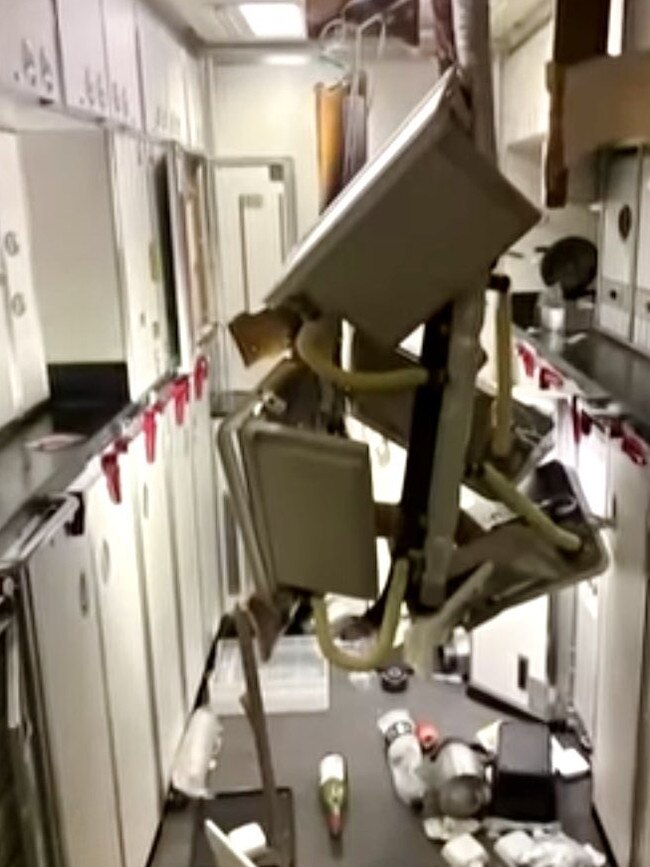
A 2021 report by the US National Transportation Safety Board found turbulence “continues to be a major cause of accidents and injuries despite a steady improvement in aviation accident rates,” AFP reported.
The Singapore Airlines fatality is thought to be the first turbulence-related fatality since 2009.
Two Australians were killed in a turbulence-related incident in 1997, when United Airlines flight 811 from Los Angeles to Sydney via Honolulu and Auckland was caught in explosive decompression.
Nine passengers were killed – including the two Australians – after a cargo door failure incurred during a climb from 22,000 to 23,000 feet.
How dangerous is turbulence?
While the fatality aboard the Singapore Airlines flight is thought to have been caused by a heart attack, turbulence can result in fatalities and severe head, neck and back injuries.
Clear air turnbulence is especially dangerous because it can be sudden and unpredictable, Capt Lucas said.

“It’s hypercritical, when passengers are seated, that they keep their seat belt fastened. When I’m on a flight deck, my seat belt is on for the entire flight and passengers should approach it the same way,” he said.
Is turbulence becoming more frequent?
A 2023 study published in Geophysical Research Letters suggested turbulence in clear air was becoming more common because of climate change.
Researchers from the University of Reading analysed 40 years of high-quality atmospheric data and found severe clear-air turbulence over the North Atlantic increased from 17.7 hours in 1979 to 27.4 hours in 2020, a jump of 55 per cent.
Moderate turbulence in that region increased by 37 per cent and light turbulence increased by 17 per cent.
The researchers found significant increases in turbulence on routes over the US, Europe and the Middle East, but did not investigate Australian air corridors.
Study co-author Paul Williams said the trend presented challenges for the aviation sector.
“We should be investing in improved turbulence forecasting and detection systems to prevent the rougher air from translating into bumpier flights in the coming decades,” he said.
Capt Lucas said he was aware of studies suggesting an increase in turbulence but from his personal experience he did not think he was encountering it more frequently than he did in the early days of his career.
The increase in reports of turbulence could simply reflect larger volumes of air traffic, he said.
More Coverage
Originally published as Singapore Airlines flight: What causes air turbulence and how common is it?
Read related topics:Explainers





